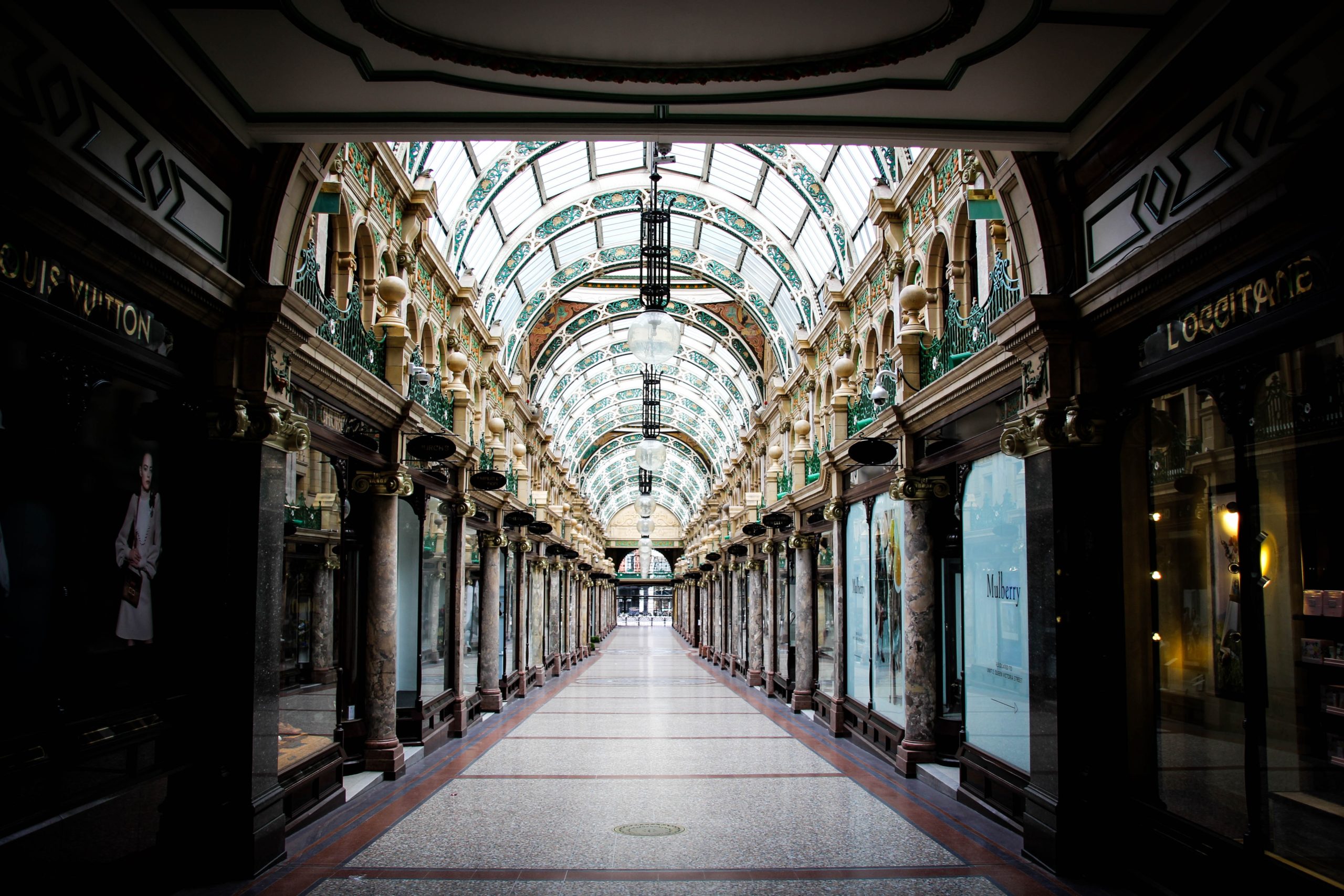
COVID-19 Reflections: Using data to invent the future cities.
The impacts of Covid19 on our daily lives and habitual routines are undeniable. These changes in our behaviour are reshaping our cities and urban areas; bustling hubs of productivity, creativity and innovation have been rendered temporarily dormant. Leeds is no exception to this, with the city centre experiencing an 89% decrease in footfall compared to the same period in 2019. Briggate is no longer experiencing an influx of Saturday morning shoppers and the once crowded bars on Call Lane are now deserted.
Despite the vast decrease in the footfall within Leeds city centre, it appears that people are still creatures of habit. The current patterns of hourly fluctuations in footfall counts remain similar to pre-pandemic Leeds. There is a rapid increase in footfall until the peak at noon, followed by a slight, gradual decrease in footfall until midnight. Tuesdays still experience the highest level of footfall, and Sundays the lowest. Changes in the night-time activity are evident, with footfall levels close to zero between midnight and 5 am.
Data can provide rich insights into urban dynamics and allow us to understand the complexity of cities. Without quantifying the current conditions of cities, it is challenging to identify how they should be developed and to assess any progress.
Pre-pandemic, the deployment of sensors to count pedestrian footfall, measure air quality and quantify noise levels were becoming a popular tool for local councils.
These data remain incredibly valuable, but now there is a drive for cities to utilise data to save lives and improve wellbeing. This can include the use of thermal imaging cameras to detect body temperatures and using drones to identify areas which require better management to allow for social distancing. There are understandable concerns about privacy and data protection. However, now more than ever, it is crucial to demonstrate the use of aggregated data for social good, while protecting individual privacy.
There are many questions as to what our post-pandemic cities will look like, given that the dynamics of everyday life will change. Professor Michael Batty notes the novel opportunity to invent our future cities, rather than to try to predict their complexity. We have the chance to redesign urban spaces with a new future in mind, one in which the health and wellbeing of citizens are at the forefront of urban design. We can use data to ensure future cities cater to the needs of citizens. Local councils and urban planners are already considering the ways urban areas can be ‘future-proofed’ and developed into safe and resilient cities. Plans are varied from pedestrianizing city centres and developing social-distancing friendly green spaces to increasing the role of health departments within urban design.
The future of cities may be uncertain for now. However, this pandemic has provoked discussion around what we want our cities to look like and how to redesign them.
Adapted from a University of Leeds, School of Geography Viewpoint piece

